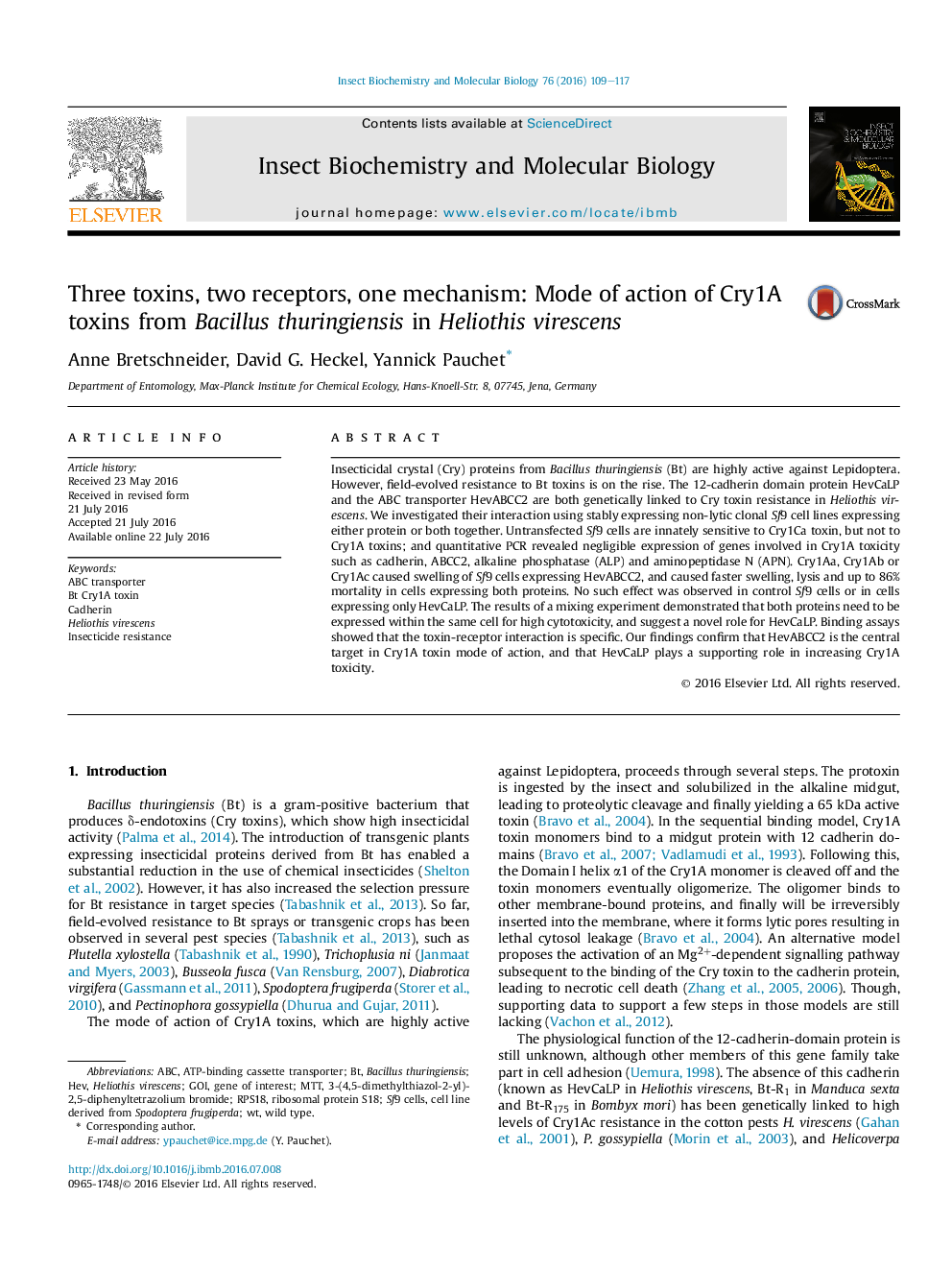| کد مقاله | کد نشریه | سال انتشار | مقاله انگلیسی | نسخه تمام متن |
|---|---|---|---|---|
| 1981956 | 1539476 | 2016 | 9 صفحه PDF | دانلود رایگان |
• The role of HevABCC2 was investigated for the Cry1A mode of action in Heliothis virescens.
• Stable heterologous expression of HevABCC2 and HevCaLP in Sf9 insect cells.
• HevABCC2 is essential for pore formation.
• HevCaLP plays a supporting role by increasing Cry1A toxicity.
Insecticidal crystal (Cry) proteins from Bacillus thuringiensis (Bt) are highly active against Lepidoptera. However, field-evolved resistance to Bt toxins is on the rise. The 12-cadherin domain protein HevCaLP and the ABC transporter HevABCC2 are both genetically linked to Cry toxin resistance in Heliothis virescens. We investigated their interaction using stably expressing non-lytic clonal Sf9 cell lines expressing either protein or both together. Untransfected Sf9 cells are innately sensitive to Cry1Ca toxin, but not to Cry1A toxins; and quantitative PCR revealed negligible expression of genes involved in Cry1A toxicity such as cadherin, ABCC2, alkaline phosphatase (ALP) and aminopeptidase N (APN). Cry1Aa, Cry1Ab or Cry1Ac caused swelling of Sf9 cells expressing HevABCC2, and caused faster swelling, lysis and up to 86% mortality in cells expressing both proteins. No such effect was observed in control Sf9 cells or in cells expressing only HevCaLP. The results of a mixing experiment demonstrated that both proteins need to be expressed within the same cell for high cytotoxicity, and suggest a novel role for HevCaLP. Binding assays showed that the toxin-receptor interaction is specific. Our findings confirm that HevABCC2 is the central target in Cry1A toxin mode of action, and that HevCaLP plays a supporting role in increasing Cry1A toxicity.
Figure optionsDownload high-quality image (304 K)Download as PowerPoint slide
Journal: Insect Biochemistry and Molecular Biology - Volume 76, September 2016, Pages 109–117
